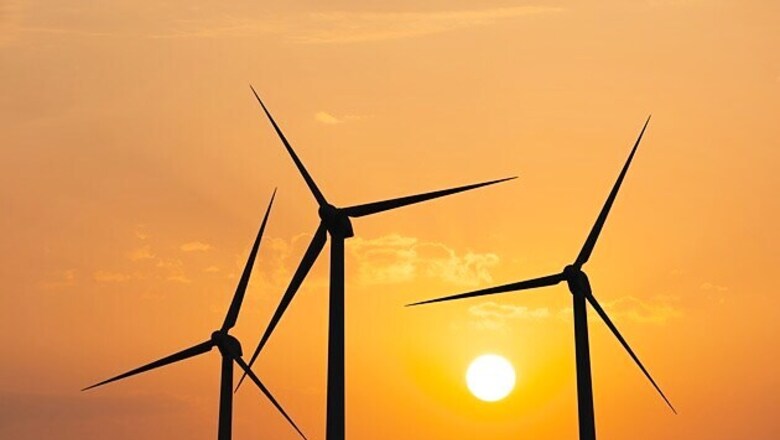
views
Renewable energy has been one of the identified sectors under National Programme on 'Make in India'. Make in India lists out vast potential of renewable energy resources in the country, its facilitative measures, and its import dependency as some of the drivers for this sector, and rightly so.
In fact the federal government's ambitious goals of having 100,000 MW of solar energy and 50,000 MW of wind energy by 2020 - not to speak of biomass and small hydro etc.- are indicative of large domestic demand being created that can benefit from indigenous manufacturing besides providing the manufacturing industry a ready-to-tap market.
India being strategically located thereby having access to the emerging renewable energy markets, renewable energy manufacturing sector is certainly poised for greater heights if some key fundamentals are kept in mind during planning and execution.
India, while as a result of efforts made during the past over two decades in promoting renewable energy, does have a certain level of manufacturing capabilities. It lacks, however, a strong and vibrant manufacturing ecosystem. It lacks scale at which economies of scale kicks in. The other fundamental that needs to be set right is integrated manufacturing along the complete value-chain (the only exception being the wind sector). In today's globalized scenario, it is imperative for any industry to be competitive. For renewable manufacturing to be truly competitive, the industry as well as government must start doing things differently. For this to happen, country needs to graduate from likes of 'domestic content requirement' to policies that facilitate and incentivize industry to acquire latest technologies, state-of-the-art manufacturing setup, and economic scales of operation.
The large-scale adoption of locally produced products would then be a natural - and sustained - progression rather than an artificially created one. And it is not that this will lead to only big manufacturing plants. Far from it. Automobile industry is a good example where large manufacturing plants are linked to so many ancillary units that are actually small and medium enterprises. The key is to focus on the complete value-chain, on components, balance of systems, and products as well.
Now 'Make in India' would not be a sustainable phenomenon in a long run if simultaneous attention is also not paid to indigenous R&D and technology development, which depending upon the requirements, may very well be collaborative. The maximization of value addition is possible with self-developed technologies and products.
For brand 'Make in India' to make its mark, assuring highest levels of quality cannot be overemphasized. And towards that, the government will have to invest heavily in creating enough testing and certification facilities of global standards that can cater to sharply increased demand arising out of this campaign. Now, the biggest challenge in tackling all of these will be to have right kind of human resources for given tasks, that too in large numbers. Thus, gearing up our education and skill development systems will hold the key if such potential is to be unlocked.
Considering the fact that one is talking of manufacturing of clean energy technologies and products, it may not be out of place to suggest that the equal attention is paid to `greening' of these manufacturing lines so that the energy intensity as well as wastage of resources is minimized to the fullest extent possible. The collateral benefit would be ultimately the reduced cost of production, and therefore, increased competitiveness.
Massive amounts of investments would be required for setting up the plants, for modernization of the existing production lines, and towards the working capital etc. While some of these could come from the existing schemes, there will still be a need for mobilization of funds on a large scale. The government, therefore, will have to create an environment that encourages `people-public-private- partnerships', thereby leveraging public resources many times over.
The deliberations in the fifteenth edition of Delhi Sustainable Development Summit (DSDS) would be around `Sustainable Development Goals and Dealing with Climate Change'. The role of renewables in this whole discourse is central, and so is their local production in order to achieve the scale most cost-efficiently.
During his recently concluded India visit, President Obama pledged $2 billion of leveraged financing for renewable energy investment and $1 billion in loans for small and medium businesses. Both of these put together could help not only in pushing US-India collaboration in the field of renewable energy to the next level, but also in giving concrete shape to some essential contours of `Make in India' vision.
A well designed `Make RE in India' programme would not only help bring down the costs of renewable energy systems through economies of scale and encourage introduction of the latest technologies/processes; it generates millions of jobs at various levels. And that is how India's demographic dividend can be used in a `green' manner.




















Comments
0 comment